2016

Kenny Gruchalla
National Renewable Energy Laboratory
July 20, 2016
Kenny Gruchalla is a senior scientist at the National Renewable Energy Laboratory and an adjunct assistant professor at the University of Colorado at Boulder. He leads the scientific visualization
efforts in the Computational Science Center at NREL. Kenny has more than 20 years of applied professional experience in scientific programming and scientific visualization, spanning several scientific disciplines, including: energy, aerospace, geophysics, molecular biology, and environmental engineering. His work has primarily focused on developing interactive scientific visualization techniques that provide tools for finding meaning in increasingly large and complex data. He holds a Ph.D. and M.S. in computer science from the University of Colorado at Boulder and a B.S. in computer science from New Mexico
Tech.
He presented an ISTI seminar during his visit.

Klaus Mueller
Stony Brook University
July 13, 2016
Klaus Mueller received a Ph.D. in computer science from the Ohio State University. He is currently a professor in the Computer Science Department at Stony Brook University and is also an
adjunct scientist in the Computational Science Initiative at Brookhaven National Labs. His current research interests are visualization, visual analytics, data science, medical imaging, and high performance computing, He won the US National Science Foundation CAREER award in 2001 and the SUNY Chancellor Award in 2011. Mueller has authored more than 170 peer-reviewed journal and conference papers, which have been cited more than 6,500 times. He is a frequent speaker at international conferences, has participated in numerous tutorials on various topics, and was until recently the chair of the IEEE Technical Committee on Visualization and Computer Graphics. He is also back on the editorial board of IEEE Transactions on Visualization and Computer Graphics and he is a senior member of the IEEE.
He presented an ISTI seminar during his visit.
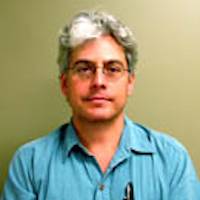
Greg Abram
University of Texas - Austin
June 13 to mid-August, 2016
Greg Abram is a visualization researcher at the Texas Advanced Computing Center, a research division of the University of Texas at Austin. Prior to joining TACC, he was at the IBM TJ Watson Research Center. He received his Ph.D. from the University of North Carolina at Chapel Hill in 1986.
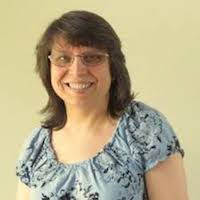
Terry Turton
University of Texas - Austin
June 13 to mid-August, 2016
Terry Turton will be visiting intermittently from mid-June to mid-August. Terry is an Associate Research Scientist at the University of Texas – Austin’s Center for Agile Technology. She received her Ph.D. in Physics from the University of Michigan and did postdoctoral work at the Superconducting Super Collider, Michgan State University and the University of Cincinnati. Her current work focuses on improved colormaps for scientific visualization and creating, implementing, running and analyzing user studies to improve visualizations of scientific data.

Hans Hagen
Technical University of Kaiserslautern
March 21 & 22, 2016
Hans Hagen is a full professor at the Technical University of Kaiserslautern and an adjunct professor at the University of California/Davis. He is also the scientific director of the institute on Intelligent Visualization and Simulation at the German Research Center for Artificial Intelligence (DFKI). He holds a Ph.D. in mathematics from the University of Dortmund, a B. S. and M. S. in mathematics and a B. S. in computer science from the University of Freiburg. Prior to his curent position, he was an associate professor at the TU Braunschweig and he had several visiting positions, especially in the USA. His research interests include all areas of scientific visualization, computer graphics and geometric modeling. He was editor in chief of the IEEE Transactions on visualization and computer graphics from 1999-2003 and is an associated editor of CAGD, Computing and Surveys on Mathematics in Industry. Prof. Hagen has published nearly 200 articles in scientific visualization, computer graphics, geometric modelling and geometry and is a member of ACM, GI, IEEE, and SIAM.

Stephen Hamilton
Johns Hopkins University
March 7-11, 2016
Stephen Hamilton is a Computer Science Ph.D. student at the Johns Hopkins University with Professor Randal Burns and a Major in the US Army. He will join Professor Burns during part of his fall 2015 to spring 2016 stay at Los Alamos. During his visit Stephen will continue his research on ParaView and Turbulence.

Hans Hagen
Technical University of Kaiserslautern
March 7, 2016
Hans Hagen is a full professor at the Technical University of Kaiserslautern and an adjunct professor at the University of California/Davis. He is also the scientific director of the institute on Intelligent Visualization and Simulation at the German Research Center for Artificial Intelligence (DFKI). He holds a Ph.D. in mathematics from the University of Dortmund, a B. S. and M. S. in mathematics and a B. S. in computer science from the University of Freiburg. Prior to his curent position, he was an associate professor at the TU Braunschweig and he had several visiting positions, especially in the USA. His research interests include all areas of scientific visualization, computer graphics and geometric modeling. He was editor in chief of the IEEE Transactions on visualization and computer graphics from 1999-2003 and is an associated editor of CAGD, Computing and Surveys on Mathematics in Industry. Prof. Hagen has published nearly 200 articles in scientific visualization, computer graphics, geometric modelling and geometry and is a member of ACM, GI, IEEE, and SIAM.

Ariane Middel
Arizona State University
March 7, 2016
Ariane Middel’s primary research interests are directed toward understanding the dynamics of urban climate to develop climate adaptation and heat mitigation strategies, specifically addressing the challenges of sustainable urban form, design, and landscapes in the face of climatic uncertainty in rapidly urbanizing regions. For the past five years, she has advanced the field of urban climatology through applied and solutions-oriented research employing urban, local, and microscale climate modeling and monitoring to investigate sustainability challenges related to Urban Heat Islands, thermal comfort, water use and quality, energy use, and human-climate interactions in cities. Dr. Middel is currently an Assistant Research Professor in the School of Geographical Sciences and Urban Planning. She received her Ph.D. in Computer Science (visualization) from University of Kaiserslautern, Germany and holds a M.Sc./B.Sc. in Geodetic Engineering from the University of Bonn, Germany.
She presented an ISTI seminar during her visit.
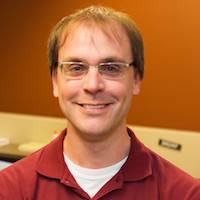
Ross Maciejewski
Arizona State University
March 7, 2016
Ross Maciejewski (PhD, Purdue University) is an Assistant Professor in the School of Computing, Informatics and Decision Systems Engineering at Arizona State University. Prior to joining Arizona State University Dr. Maciejewski served as a visiting faculty member at Purdue as a member of the Department of Homeland Security’s Center of Excellence focusing on visual analytics (VACCINE). His work at Purdue’s VACCINE Center was honored by the United States Coast Guard with a Meritorious Team Commendation as part of his work on the Port Resilience for Operational Tactical Enforcement to Combat Terrorism (PROTECT) Team. Dr. Maciejewski’s recent work has actively explored the extraction and linking of disparate data sources exploring combinations of structured geographic data to unstructured social media data to enhance situational awareness. His primary research interests are in the areas of geographical visualization and visual analytics focusing on public health, dietary analysis, social media, and criminal incident reports. He has served on the organizing committee for the IEEE Conference on Visual Analytics Science and Technology (2012-2013, 2015) and the IEEE/VGTC EuroVis Conference (2014-2016) and has been involved in award winning submissions to the IEEE Visual Analytics Contest (2010, 2013 and 2015). He is a Fellow of the Global Security Initiative at ASU and the recipient of an NSF CAREER Award (2014). For more information on his current work visit vader.lab.asu.edu.
He presented an ISTI seminar during his visit.

Hans Hagen
Technical University of Kaiserslautern
January 26 & 27, 2016
Hans Hagen is a full professor at the Technical University of Kaiserslautern and an adjunct professor at the University of California/Davis. He is also the scientific director of the institute on Intelligent Visualization and Simulation at the German Research Center for Artificial Intelligence (DFKI). He holds a Ph.D. in mathematics from the University of Dortmund, a B. S. and M. S. in mathematics and a B. S. in computer science from the University of Freiburg. Prior to his curent position, he was an associate professor at the TU Braunschweig and he had several visiting positions, especially in the USA. His research interests include all areas of scientific visualization, computer graphics and geometric modeling. He was editor in chief of the IEEE Transactions on visualization and computer graphics from 1999-2003 and is an associated editor of CAGD, Computing and Surveys on Mathematics in Industry. Prof. Hagen has published nearly 200 articles in scientific visualization, computer graphics, geometric modelling and geometry and is a member of ACM, GI, IEEE, and SIAM.
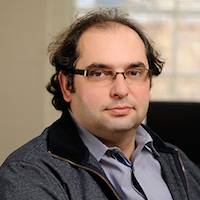
Vladimir Braverman
Johns Hopkins University
January 21, 2016
Vladimir Braverman is an Assistant Professor with the Department of Computer Science at the Johns Hopkins University. His main research interests are randomized and streaming algorithms. Vladimir obtained his B.Sc. and M.Sc. degrees from Ben-Gurion University of the Negev, Israel, and his Ph.D. from UCLA in 2011. Prior to attending UCLA, Braverman has led a research team at HyperRoll, a startup company that has been acquired by Oracle in 2009.
He presented an ISTI seminar during his visit.
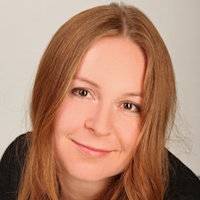
Roxana Bujack
The University of California - Davis
January to March, 2016
Roxana Bujack graduated in mathematics and computer science and received her Ph.D. in the Image and Signal Processing group at Leipzig University in Germany. Currently, she is a Postdoctoral Researcher at the Institute for Data Analysis and Visualization (IDAV) at the University of California, Davis with Prof. Kenneth I. Joy. Her research interests include flow visualization, pattern recognition in vector fields, moment invariants, and Clifford analysis.
She presented an ISTI seminar during her visit.
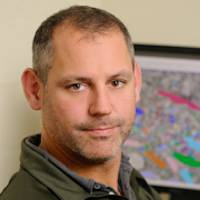
Randal Burns
Johns Hopkins University
September 2015 to May 2016
Randal Burns is an Associate Professor in the Department of Computer Science and the Institute for Data-Intensive Engineering and Science at the Johns Hopkins University. He is a co-founder, chief architect, and the lead developer of the Open Connectome Project. His research for the last decade has centered on high-performance computing for scientific applications, specifically spatial data organization, batch query processing, and parallel data architectures. He has only recently discovered that neuroscience has the coolest data; he is a first time NIH Principal Investigator as of 2012. He is also a member of the Defense Science Study Group (DSSG) Class of 2012-2013.
2015

Bill Hoffman
Kitware
December 8, 2015
Bill Hoffman is a founder of Kitware and currently serves as Vice President and Chief Technical Officer. He is the original author and lead architect of CMake , an open-source, cross-platform build and configuration tool that is used by hundreds of projects around the world and the co-author of the accompanying text, Mastering CMake. Using his 20+ years of experience with large software systems development, Mr. Hoffman is also a major technical contributor to Kitware’s Visualization Toolkit, Insight Toolkit and ParaView projects.
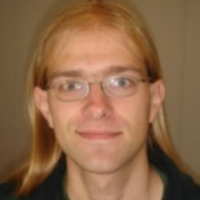
Jasper van de Gronde
The University of Groningen
December 7 to 11, 2015
Jasper van de Gronde is a postdoc in the Scientific Visualization and Computer Graphics research group at the University of Groningen in The Netherlands. He is interested in all sorts of signal/image processing topics, including compressed sensing, linear and morphological filters, and deep learning, with a special interest in applications on large/high-dimensional and non-scalar data. His Ph.D. thesis was on morphological operators for tensor images, exploring shape and structure in movement and direction dependence.
He presented an ISTI seminar during his visit.

Alex Baden
Johns Hopkins University
December 9 to 11, 2015
Alex Baden is a Computer Science Ph.D. student at the Johns Hopkins University with Professor Randal Burns. He will join Professor Burns during part of his fall 2015 to spring 2016 stay at Los Alamos. During his visit Alex will continue his research on 3-D Web-services in JavaScript libraries with Randal. He will also collaborate with the Data Science at Scale team on virtualized environments.
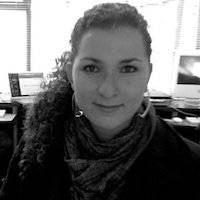
Diana Fernandez
The University of Kaiserslautern
October 19 to 23, 2015
Diana Fernandez is a Ph.D. student in Computer Science at the University of Kaiserslautern in Germany. Her research is in the visualization of spatio-temporal data sets, scientific visualization and information visualization.

Christoph Garth
The University of Kaiserslautern
October 9, 2015
Christoph Garth is an assistant professor at the Technical University of Kaiserslautern in the Computational Topology Group of the Department of Computer Science. He has published nearly 50 articles since 2004 in visualization computational topology, visual analysis, flow visualization, fluid flow and high-performance visualization.n.

Jim Jeffers
Intel
September 15, 2015
Jim Jeffers is a Prinicipal Engineer at Intel where he works with Intel teams, HPC / Supercomputing customers and industry to enable effective use of Intel(r) parallel computing hardware and software solutions including Intel(r) Xeon(r) processors, Intel(r) Xeon Phi(tm) products and Intel(r) True Scale Fabric products. He is leading the development of high performance and high fidelity technical computing visualization solutions including the Open Source Embree Ray Tracing Library and Toolkit.

Bruce Cherniak
Intel
September 15, 2015
Bruce Cherniak is a Senior Graphics Software Engineer in Intel’s Enterprise and HPC Platform Group. Bruce joined Intel in 2006 to work on an exciting new many-core parallel processor focused on the dawning epoch of software graphics. Bruce’s passion and experience includes software development and technical leadership in all levels of the graphics pipeline, and graphics software developer relations. He has worked on systems ranging from embedded controllers to high-end professional graphics solutions. Bruce is currently a developer and evangelist for Intel’s parallel software based renderer – OpenSWR.

Randal Burns
Johns Hopkins University
September 2015 to May 2016
Randal Burns is an Associate Professor in the Department of Computer Science and the Institute for Data-Intensive Engineering and Science at the Johns Hopkins University. He is a co-founder, chief architect, and the lead developer of the Open Connectome Project. His research for the last decade has centered on high-performance computing for scientific applications, specifically spatial data organization, batch query processing, and parallel data architectures. He has only recently discovered that neuroscience has the coolest data; he is a first time NIH Principal Investigator as of 2012. He is also a member of the Defense Science Study Group (DSSG) Class of 2012-2013.

Satoshi Matsuoka
Tokyo Institute of Technology
August 26, 2015
Satoshi Matsuoka received his Ph. D. from the University of Tokyo in 1993. He became a full Professor at the Global Scientific Information and Computing Center (GSIC) of Tokyo Institute of Technology (Tokyo Tech / Titech) in April 2001, leading the Research Infrastructure Division Solving Environment Group of the Titech campus. He has pioneered grid computing research in Japan the mid 90s along with his collaborators, and currently serves as sub-leader of the Japanese National Research Grid Initiative (NAREGI) project, that aim to create middleware for next-generation CyberScience Infrastructure. He was also the technical leader in the construction of the TSUBAME supercomputer, which has become the fast supercomputer in Asia-Pacific in June, 2006 at 85 Teraflops (peak, now 111 Teraflops as of March 2009) and 38.18 Teraflops (Linpack, 7th on the June 2006 list) and also serves as the core grid resource in the Titech Campus Grid. He has been (co-) program and general chairs of several international conferences including ACM OOPSLA’2002, IEEE CCGrid 2003, HPCAsia 2004, Grid 2006, CCGrid 2006/2007/2008, as well as countless program committee positions, in particular numerous ACM/IEEE Supercomputing Conference (SC) technical papers committee duties including serving as the network area chair for SC2004, SC2008, and was the technical papers chair for SC2009, and will be the Communities Program Chair for SC2011. He served as a Steering Group member and an Area Director of the Global Grid Forum during 1999-2005, and recently became the steering group member of the Supercomputing Conference. He has won several awards including the Sakai award for research excellence from the Information Processing Society of Japan in 1999, and recently received the JSPS Prize from the Japan Society for Promotion of Science in 2006 from his Royal Highness Prince Akishinomiya.

Dave DeMarle
Kitware
August 17 to 21, 2015
Dave DeMarle received his B.S. in Electrical and Computer Engineering from the SUNY University at Buffalo in 1995, and his M.S. in Computer Science from the University of Utah in 2003. In the interim Dave worked as a computer systems engineer for the Link Flight Simulation Division of the L3-Communications Corporation. Dave’s research interests are in systems level aspects of visualization, in particular memory optimizations for parallel visualization of large data sets. Mr. DeMarle joined Kitware in June of 2005 where he contributes to both ParaView and VTK. He frequently teaches Kitware’s professional development and training courses for these product applications.

Bernd Hamann
The University of California - Davis
August 17 to 18, 2015
Bernd Hamann studied mathematics and computer science at the Technical University of Braunschweig, Germany, and Arizona State University. At the University of California, Davis, he teaches computer science courses, with a focus on visualization, geometric design and modeling, and computer graphics. Jointly with his students, post-doctoral scholars and other collaborators he has contributed to the development of techniques for the analysis and visual exploration of complex, large scientific data.
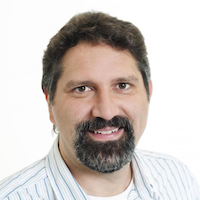
Torsten Moeller
The University of Vienna
August 17, 2015
Torsten Moeller is a professor at the University of Vienna, Austria, since 2013. Between 1999 and 2012 he served as a Computing Science faculty member at Simon Fraser University, Canada. He received his Ph.D. in Computer and Information Science from Ohio State University in 1999 and a Vordiplom (BSc) in mathematical computer science from Humboldt University of Berlin, Germany. He is a senior member of IEEE and ACM, and a member of Eurographics. His research interests include algorithms and tools for analyzing and displaying data with principles rooted in computer graphics, image processing, visualization and human-computer interaction. He heads the research group of Visualization and Data Analysis. He served as the appointed Vice Chair for Publications of the IEEE Visualization and Graphics Technical Committee (VGTC) between 2003 and 2012. He has served on a number of program committees and has been papers co-chair for IEEE Visualization, EuroVis, Graphics Interface, and the Workshop on Volume Graphics as well as the Visualization track of the 2007 International Symposium on Visual Computing. He has also co-organized the 2004 Workshop on Mathematical Foundations of Scientific Visualization, Computer Graphics, and Massive Data Exploration as well as the 2010 Workshop on Sampling and Reconstruction: Applications and Advances at the Banff International Research Station, Canada. He is a co-founding chair of the Symposium on Biological Data Visualization (BioVis). In 2010, he was the recipient of the NSERC DAS award. He received best paper awards from IEEE Conference on Visualization (1997), Symposium on Geometry Processing (2008), and EuroVis (2010), as well as two second best paper awards from EuroVis (2009, 2012).

Bill Howe
The University of Washington
August 12, 2015
Bill Howe is the Associate Director of the UW eScience Institute and holds an Affiliate Assistant Professor appointment in Computer Science & Engineering at the University of Washington, where he studies data management, analytics, and visualization systems for science applications. Howe has received two Jim Gray Seed Grant awards from Microsoft Research for work on managing environmental data, has had two papers elected to VLDB Journal’s ‘Best of Conference’ issues (2004 and 2010), and co-authored what are currently the most-cited papers from both VLDB 2010 and SIGMOD 2012. Howe serves on the program and organizing committees for a number of conferences in the area of databases and scientific data management, and serves on the Science Advisory Board of the SciDB project. He has a Ph.D. in Computer Science from Portland State University and a Bachelor’s degree in Industrial & Systems Engineering from Georgia Tech.
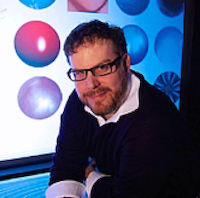
Dan Keefe
The University of Minnesota
August 5, 2015
Dan Keefe is an Associate Professor in the Department of Computer Science and Engineering at the University of Minnesota. His research centers on scientific data visualization and interactive computer graphics. Keefe’s recent awards include the National Science Foundation CAREER award; the University of Minnesota Guillermo E. Borja Award for research and scholarly accomplishments; the University of Minnesota McKnight Land-Grant Professorship; and the 3M Non-tenured Faculty Award. He has received multiple best paper and best panel awards at top international conferences, such as IEEE VIS and ACM Interactive 3D Graphics. His research has been funded by the National Science Foundation, the National Institutes of Health, the National Academies Keck Futures Initiative, and industry sponsors. In addition to his work in computer science, Keefe is also an accomplished artist and has published and exhibited work in top international venues for digital art. Before joining the University of Minnesota, Keefe did post-doctoral work at Brown University jointly with the departments of Computer Science and Ecology and Evolutionary Biology and with the Rhode Island School of Design. He received the Ph.D. in 2007 from Brown University’s Department of Computer Science and the B.S. in Computer Engineering summa cum laude from Tufts University in 1999.

Gagan Agrawal
The Ohio State University
July 29, 2015
Gagan Agrawal is an educator and researcher in Computer Science and Engineering, currently a professor at the Ohio State University. He has published more than 170 papers in his 19 year research career. He has graduated 12 Ph.Ds (currently working with another 11 Ph.D students) and his research has been supported by more than 7 million dollars of funding from government agencies. Gagan has conducted research in a number of computer science areas, including parallel and distributed systems and applications, data-intensive computing, compilers, middleware systems, data mining, data integration, web search, and web/grid services. His current research focuses on a number of topics, including issues in programming emerging multi-core machines and GPGPUs, deep web search, time-critical/adaptive systems, and data-intensive computing. He has taught graduate and undergraduate classes in operating systems, distributed systems, computer architecture, and compilers. In addition to his research and teaching responsibilities at Ohio State, Gagan has served as the graduate program chair for his department at Ohio State since 2003.
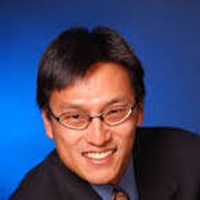
Wu-Chun Feng
Virginia Tech
July 22, 2015
Wu-Chun (Wu) Feng is the Elizabeth & James E. Turner Fellow & Professor in the Department of Computer Science, Department of Electrical & Computer Engineering, and Virginia Bioinformatics Institute at Virginia Tech. His interests lie broadly at the synergistic intersection of computer architecture, systems software and middleware, and applications software. Most recently, his research has dealt with high-performance networking protocols, dynamic multicore scheduling, accelerator-based computing for bioinformatics, virtual computing, power-aware computing, and bioinformatics in general. He joined Virginia Tech in 2006 after spending seven years at Los Alamos National Laboratory. He is the recipient of three Best Paper Awards in human-computer interaction, high-performance networking, and bioinformatics, respectively, and three R&D 100 Awards in green supercomputing, high-speed networking, and bioinformatics, respectively. He leads the SyNeRGy Laboratory as well as four grass roots projects: The Green500 List, mpiBLAST, Supercomputing in Small Spaces, and MyVICE.

Hans Hagen
Technical University of Kaiserslautern
July 15, 2015
Hans Hagen is a full professor at the Technical University of Kaiserslautern and an adjunct professor at the University of California/Davis. He is also the scientific director of the institute on Intelligent Visualization and Simulation at the German Research Center for Artificial Intelligence (DFKI). He holds a Ph.D. in mathematics from the University of Dortmund, a B. S. and M. S. in mathematics and a B. S. in computer science from the University of Freiburg. Prior to his curent position, he was an associate professor at the TU Braunschweig and he had several visiting positions, especially in the USA. His research interests include all areas of scientific visualization, computer graphics and geometric modeling. He was editor in chief of the IEEE Transactions on visualization and computer graphics from 1999-2003 and is an associated editor of CAGD, Computing and Surveys on Mathematics in Industry. Prof. Hagen has published nearly 200 articles in scientific visualization, computer graphics, geometric modelling and geometry and is a member of ACM, GI, IEEE, and SIAM.
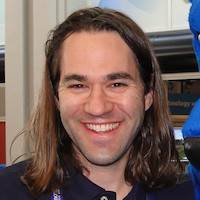
Kenneth Moreland
Sandia National Laboratories
July 1, 2015
Dr. Kenneth Moreland is a principal member of technical staff at Sandia National Laboratories. He received the BS degrees in computer science and in electrical engineering from the New Mexico Institute of Mining and Technology in 1997. He received the MS and Ph.D. degrees in computer science from the University of New Mexico in 2000, and 2004, respectively. Dr. Moreland specializes in large-scale visualization and graphics and has played an active role in the development of several HPC products including ParaView, VTK, IceT, and Dax. His current interests the design and development of visualization algorithms and systems to run on multi-core, many-core and future-generation computer hardware.
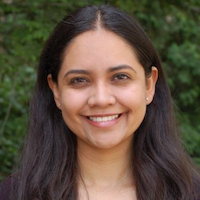
Cindy Rubio Gonzalez
The University of California - Davis
June 24, 2015
Cindy Rubio Gonzalez is an Assistant Professor of Computer Science at the University of California, Davis. Prior to that position, she was a Postdoctoral Researcher in the Electrical Engineering and Computer Sciences Department at the University of California, Berkeley, where she worked with Koushik Sen, James Demmel, Costin Iancu, and William Kahan. She received her Ph.D. in Computer Science from the University of Wisconsin–Madison in 2012, advised by Prof. Ben Liblit. Her work spans the areas of programming languages and software engineering, with a specific focus on program analysis. Her research aims to design and build tools to help developers write more reliable and efficient software. For her doctoral dissertation, she designed and applied static program analyses to find error-propagation bugs in large software systems. At UC Berkeley, Cindy led the development of dynamic program analysis tools to improve the performance of numerical programs. Cindy is a UC Davis CAMPOS Faculty Scholar, an AAUW International Doctoral Fellow, and a member of Latinas in Computing. Cindy earned her M.S. in Computer Science from the University of Wisconsin–Milwaukee and her B.S. in Computer Engineering from Saltillo Institute of Technology (Mexico). She also received a B.M. in Piano Performance from the Autonomous University of Coahuila (Mexico). Cindy is originally from Saltillo, Coahuila, México.

Cecilia Aragon
The University of Washington
June 17, 2015
Dr. Cecilia Aragon is the director of the Human-Centered Data Science Lab at the University of Washington. Her research focuses on human-centered data science, which concerns itself with both the algorithms and the highly interwoven and multifaceted interactions among individuals, society, and technology that are catalyzed by the enormous growth in data that characterizes the current age. Aragon’s research group develops software to facilitate insight into vast and complex data sets, incorporating techniques such as visual analytics (visualization and machine learning), data science, ethnography, and the study of sociotechnical systems including informal text communication and social media. Other projects include the use of computer gaming for collaborative science learning, and topics related to usability and sustainability. She was the architect for Sunfall, a collaborative visual analytics system for supernova astrophysics. She developed an augmented-reality visualization system for helicopter pilots that increased their ability to land safely during simulated hazardous conditions. Her early work was in theoretical computer science. She was the co-inventor (with Raimund Seidel) of the treap, a binary search tree in which each node has both a key and a priority, and the randomized search tree, which uses random priorities in treaps to achieve good average-case performance. With Johnson, McGeoch, and Schevon, she conducted the first extensive evaluation of the simulated annealing algorithm in combinatorial optimization problems.

Greg Abram
The University of Texas - Austin / Texas Advanced Computing Center - TACC
Mid-June to August, 2015
Greg Abram is a visualization researcher at the Texas Advanced Computing Center, a research division of the University of Texas at Austin. Prior to joining TACC, he was at the IBM TJ Watson Research Center. He received his Ph.D. from the University of North Carolina at Chapel Hill in 1986.

Terry Turton
The University of Texas - Austin / Center for Agile Technology
Mid-June to August, 2015
Terry Turton is an Associate Research Scientist at the University of Texas – Austin’s Center for Agile Technology. She received her Ph.D. in Physics from the University of Michigan and did postdoctoral work at the Superconducting Super Collider, Michgan State University and the University of Cincinnati. Her current work focuses on improved colormaps for scientific visualization and creating, implementing, running and analyzing user studies to improve visualizations of scientific data.

Jake Johnson
Nebula
February 17, 2015
Jake Johnson is a Sales Engineer at Nebula. He was previously a Storage Technology Strategist at Ocarina Networks / Dell. Prior to that he was a Sales Engineer at Storewiz, IBRIX and Andataco. He will be onsite to oversee installation of a Nebula OpenStack Cloud Cluster to be called Galton. He will also present a tutorial on its use.

Hamish Carr
The University of Leeds
February 2 to March 13, 2015
Hamish Carr is currently a member of the Visualization and Virtual Reality Group at the University of Leeds where he also teaches Software Engineering. He has taught I have taught Computer Graphics, Advanced Computer Graphics and Scientific & Medical Visualization. Carr’s interests are in anything that combines geometry, computers and a visual element. This includes computer graphics, computational geometry, scientific and medical visualization, and graph theory.
2014
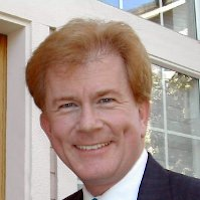
John Gustafson
Stealth Startup Company
October 8, 2014
John Gustafson was Senior Fellow and Chief Product Architect at AMD (Graphics Processor Group, formerly ATI), until June 2013. He left to complete a book on a new approach to computer arithmetic. He has joined the Boards of SSRLabs, Etaphase Inc., and Clustered Systems Company Inc. He co-founded Ceranovo as CTO in November 2013 to pursue a proven technology for capacitors with very high energy and power density. John was a Director at Intel Labs from March 2009 to February 2012; he managed the group charged with driving off-roadmap, high-impact exploratory research. He was a member of the Board of Directors of Massively Parallel Technologies (MPT) from 2007 to May 2014, a company where he took the CEO role from May, 2008 to March 2009. MPT is a parallel computing company founded in 1999 that received multiple contracts from the DARPA HPCS program (the same one that funded Cray, Sun, and IBM); it is now applying the patented IP it generated during that phase to the creation of firmware/hardware product lines that allow HPC clusters to scale to thousands of processors on a single problem. Its communication technology is complementary to the arithmetic accelerators made by companies like ClearSpeed. John joined ClearSpeed in 2005 as CTO for HPC after leading HPC efforts at Sun. He has 42 years experience using and designing compute-intensive systems, including the first matrix algebra accelerator and the first commercial massively-parallel cluster while at Floating Point Systems. His pioneering work on a 1024-processor nCUBE at Sandia created a watershed in parallel computing, for which he received the inaugural Gordon Bell Award. He has received three R&D 100 Awards for innovative performance models, including the model commonly known as Gustafson’s Law or Scaled Speedup. He received his B.S. degree from Caltech and his M.S. and Ph.D. degrees from Iowa State University, all in Applied Mathematics.
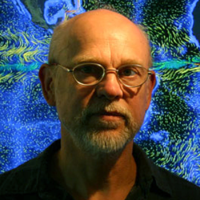
Colin Ware
The University of New Hampshire
October 7 to 9, 2014
Colin Ware is the Director of the Data Visualization Research Lab which is part of the Center for Coastal and Ocean Mapping at the University of New Hampshire. He is cross appointed between the Departments of Ocean Engineering and Computer Science. Ware specializes in advanced data visualization and has a special interest in applications of visualization to Ocean Mapping. He combines interests in both basic and applied research and he has advanced degrees in both computer science (MMath, Waterloo) and in the psychology of perception (Ph.D.,Toronto). Ware has published over 150 articles in scientific and technical journals and leading conference proceedings. Many of these articles relate to the use of color, texture, motion and 3D displays in information visualization. His approach is always to combine theory with practice and his publications range from rigorously scientific contributions to the Journal of Physiology and Vision Research to applications-oriented articles in ACM Transactions on Graphics and various visualization and human-computer Interaction Journals. Ware likes to build useful visualization systems. A founding member of the Ocean Mapping Group at the University of New Brunswick (and lately the Ocean Mapping Center at UNH), he has been designing 3D interactive visualization systems for ocean mapping for about 25 years. He and his graduate students created the first version of the Fledermaus visualization system, now widely used in Oceanographic applications. Ware has also contributed to software system visualization. Visual Thinking book coverHe directed the development of NestedVision3D, a system for visualizing very large networks of information. Ware has been instrumental in the creation of two spinoff visualization companies based initially on his research. Interactive Visualization Systems, Inc. makes visualization software for advanced ocean mapping applications. NVision Software Systems, Inc. provided visualization tools to enhance the understanding of large highly interconnected datasets. He is currently working on a variety of projects including ocean current visualization, the visualization of marine mammal tracks, and more theoretically, visual thinking algorithms. Colin Ware’s has written two books: Visual Thinking for Design is an up to date account of the psychology of how we think using graphic displays as tools. Information Visualization: Perception for Design now in its 3rd edition is a comprehensive survey of what human perception tells us about how to display information.

Hans Hagen
Technical University of Kaiserslautern
October 1 & 2, 2014
Hans Hagen is a full professor at the Technical University of Kaiserslautern and an adjunct professor at the University of California/Davis. He is also the scientific director of the institute on Intelligent Visualization and Simulation at the German Research Center for Artificial Intelligence (DFKI). He holds a Ph.D. in mathematics from the University of Dortmund, a B. S. and M. S. in mathematics and a B. S. in computer science from the University of Freiburg. Prior to his curent position, he was an associate professor at the TU Braunschweig and he had several visiting positions, especially in the USA. His research interests include all areas of scientific visualization, computer graphics and geometric modeling. He was editor in chief of the IEEE Transactions on visualization and computer graphics from 1999-2003 and is an associated editor of CAGD, Computing and Surveys on Mathematics in Industry. Prof. Hagen has published nearly 200 articles in scientific visualization, computer graphics, geometric modelling and geometry and is a member of ACM, GI, IEEE, and SIAM.

Christoph Garth
Technical University of Kaiserslautern
October 1 & 2, 2014
Christoph Garth is an assistant professor at the Technical University of Kaiserslautern in the Computational Topology Group of the Department of Computer Science. He has published nearly 50 articles since 2004 in visualization computational topology, visual analysis, flow visualization, fluid flow and high-performance visualization.

Anne Berres
Technical University of Kaiserslautern
October 1 & 2, 2014
Anne Berres holds B.Sc. and M.Sc. Degrees in Computer Science from the Technical University of Kaiserslautern and is currently a Ph.D. student in Computer Science at the Technical University of Kaiserslautern. Her research interests include topology, differential manifolds, differential geometry, medical visualization, neural diseases and probablistic tractogrphy. She was the lead author of ‘Tractography in Context: Multimodal Visualization of Probabilistic Tractograms in Anatomical Context’ published in the Eurographics Workshop on Visual Computing for Biology and Medicine 2012.
She presented an ISTI seminar during her visit.
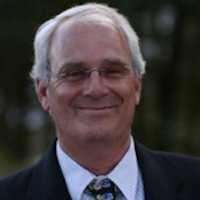
Roger Daneker
Technical University of Kaiserslautern
October 1 & 2, 2014
Roger Daneker is an adjunct professor at the University of Maryland-University College Europe and a system administrator at the Technical University of Kaiserslautern. He holds a B.Sc. Degree in Computer Science from the University of Maryland-University College Europe.

Guillaume Belanger
The European Space Astronomy Centre
September 24, 2014
Guillaume Belanger works as an operation scientist on the Gamma-ray mission Integral in the Science Operations Department of the European Space Agency at ESAC, the European Space Astronomy Centre near Madrid in Spain. His research has been, and still is, firmly anchored to the deepest gravitational well in the Galaxy: Sagittarius A* (Sgr A*). This four-million solar mass black hole whose location defines the nucleus of the Milky Way, is surrounded by a large array of unusal and intimately interacting astrophysical systems. He is interested in the investigation of the ways in which these systems evolve and interact with one another.

Ian Foster
The University of Chicago and Argonne National Laboratory
September 18, 2014
Ian Foster is Director of the Computation Institute, a joint institute of the University of Chicago and Argonne National Laboratory. He is also an Argonne Senior Scientist and Distinguished Fellow and the Arthur Holly Compton Distinguished Service Professor of Computer Science. Ian received a BSc (Hons I) degree from the University of Canterbury, New Zealand, and a Ph.D. from Imperial College, United Kingdom, both in computer science. His research deals with distributed, parallel, and data-intensive computing technologies, and innovative applications of those technologies to scientific problems in such domains as climate change and biomedicine. Methods and software developed under his leadership underpin many large national and international cyberinfrastructures. Dr. Foster is a fellow of the American Association for the Advancement of Science, the Association for Computing Machinery, and the British Computer Society. His awards include the Global Information Infrastructure (GII) Next Generation award, the British Computer Society’s Lovelace Medal, R&D Magazine’s Innovator of the Year, and an honorary doctorate from the University of Canterbury, New Zealand. He was a co-founder of Univa UD, Inc., a company established to deliver grid and cloud computing solutions.
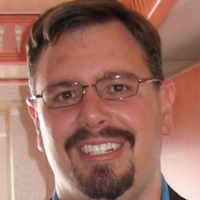
Hank Childs
The University of Oregon
September 10, 2014
Hank Childs is an Assistant Professor in the Computer and Information Science Department at the University of Oregon. He received his Ph.D. in computer science from the University of California at Davis in 2006. Hank’s research focuses on scientific visualization, high performance computing, and the intersection of the two. In July of 2012, Hank received the Department of Energy Early Career Award to research visualization with exascale computers (i.e., computers that can do 10^18 floating operations per second). Hank spent over a dozen years at Lawrence Berkeley and Lawrence Livermore National Laboratories, directing research in big data visualization. Outside of his research, Hank is best known as the architect of the VisIt project, a visualization application for very large data that is used around the world.

Hans Hagen
Technical University of Kaiserslautern
September 4 & 5, 2014
Hans Hagen is a full professor at the Technical University of Kaiserslautern and an adjunct professor at the University of California/Davis. He is also the scientific director of the institute on Intelligent Visualization and Simulation at the German Research Center for Artificial Intelligence (DFKI). He holds a Ph.D. in mathematics from the University of Dortmund, a B. S. and M. S. in mathematics and a B. S. in computer science from the University of Freiburg. Prior to his curent position, he was an associate professor at the TU Braunschweig and he had several visiting positions, especially in the USA. His research interests include all areas of scientific visualization, computer graphics and geometric modeling. He was editor in chief of the IEEE Transactions on visualization and computer graphics from 1999-2003 and is an associated editor of CAGD, Computing and Surveys on Mathematics in Industry. Prof. Hagen has published nearly 200 articles in scientific visualization, computer graphics, geometric modelling and geometry and is a member of ACM, GI, IEEE, and SIAM.
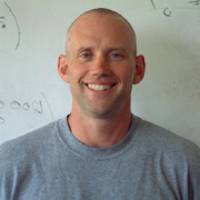
Ross Whitaker
The University of Utah
August 27 & 28, 2014
Ross Whitaker graduated Summa Cum Laude with B.S. degree in Electrical Engineering and Computer Science from Princeton University in 1986. From 1986 to 1988 he worked for the Boston Consulting Group, entering the University of North Carolina at Chapel Hill in 1989. At UNC he received the Alumni Scholarship Award, and completed his Ph.D. in Computer Science in 1994. From 1994-1996 he worked at the European Computer-Industry Research Centre in Munich Germany as a research scientist in the User Interaction and Visualization Group. From 1996-2000 he was an Assistant Professor in the Department of Electrical Engineering at the University of Tennessee and received an NSF Career Award. Since 2000 he has been at the University of Utah where he is a Professor in the School of Computing and a faculty member of the Scientific Computing and Imaging Institute. He teaches discrete math, scientific visualization, and image processing. He has leads graduate-level research group in image analysis, geometry processing, and scientific computing, with a variety of projects supported by both federal agencies and industrial contracts.

Mike Kirby
The University of Utah
August 27 & 28, 2014
Robert M. (Mike) Kirby received the M.S. degree in applied mathematics, the M.S. degree in computer science, and the Ph.D. degree in applied mathematics from Brown University, Providence, RI, in 1999, 2001, and 2002, respectively. He was promoted and received tenure at Utah in 2008. During his 2008-2009 sabbatical year, he taught a Michaelmas term course in High-Performance Scientific Computing at the Cavendish Laboratory at Cambridge University, UK and for the academic year was the Leverhulme Visiting Professor of Aeronautics at Imperial College London, UK. He is currently a (Full) Professor of Computing and Associate Director with the School of Computing, University of Utah, Salt Lake City, where he is also an Adjunct Professor in the Departments of Bioengineering and Mathematics and a member of the Scientific Computing and Imaging Institute. His current research interests include scientific computing and visualization.
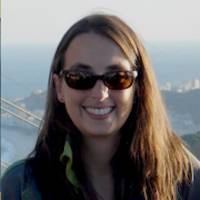
Kristin Potter
The University of Oregon
August 20 & 21, 2014
Kristi Potter is a visualization consultant and research programmer at the University of Oregon, working with the College of Arts and Science research support team. Her current research is focused on methods for improving visualization techniques by adding qualitative information concerning uncertainties present throughout the entire scientific pipeline. This work includes researching statistical measures of uncertainty, error, and confidence levels, and translating the semantic meaning of these measures into visual metaphors. In addition to research in visualization, she is working to bring visualization technologies to the university through classes, workshop, seminars and private consultation. She received her Ph.D. in 2010 and MS in 2003 from Utah, and her BS in 2000 from the University of Oregon in computer science and fine art. She is serving on the Anita Borg Systers Pass-It-On Awards committee, and acted as chair from 2011 to 2013.
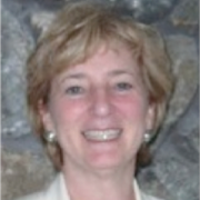
Bernice Rogowitz
Visual Perspectives
August 13 & 14, 2014
Bernice Rogowitz is a perceptual psychologist who draws research inspiration from visualization and imaging applications in medicine, finance, and physics. Dr. Rogowitz received her Ph.D. from Columbia University and was a postdoc at Harvard. As a scientist and research manager at the IBM T.J. Watson Research Center, Dr. Rogowitz led research on visual representation, semantics, and analysis, producing both fundamental science and practical tools. She has recently founded a research and consulting company, called Visual Perspectives, which helps companies and research labs integrate principles of human perception and cognition into their programs. She is the founder of a multidisciplinary conference on Human Vision and Electronic Imaging, whose goal is to foster research at the intersection between perception, imaging technology and art. She is a Fellow of the SPIE and the IS&T, has published over 70 papers, and has issued patents in areas ranging from visualization to haptic interfaces to nanotechnology.

Yanif Ahmad
Johns Hopkins University
August 6, 2014
Yanif Ahmad studies and designs novel abstractions for large-scale data management. He is affiliated with the Data Management Systems Lab; Computer Systems Research Group and the Institute for Data-Intensive Engineering and Science. His research spans foundations and applications, with the K3 project realizing programming abstractions for declarative, democratized construction of distributed data systems, and the Molecular Dynamics Database pursuing data-intensive computing architectures and analytics for large biological datasets. Ahmad received his Ph.D. from Brown University in 2009.

Bernd Hamann
The University of California - Davis
July 30 & 31, 2014
Bernd Hamann studied mathematics and computer science at the Technical University of Braunschweig, Germany, and Arizona State University. At the University of California, Davis, he teaches computer science courses, with a focus on visualization, geometric design and modeling, and computer graphics. Jointly with his students, post-doctoral scholars and other collaborators he has contributed to the development of techniques for the analysis and visual exploration of complex, large scientific data.
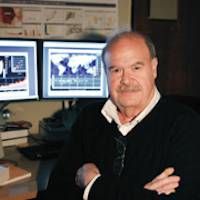
Georges Grinstein
The University of Massachusetts - Lowell
July 29, 2014
Georges Grinstein is Professor of Computer Science at the University of Massachusetts Lowell, head of its Bioinformatics Program and Director of its Institute for Visualization and Perception Research. He received his Ph.D. in Mathematics from the University of Rochester in 1978. His work is broad and interdisciplinary, covering the perceptual and cognitive foundations of visualization, very high-dimensional data visualization, visualization theory, and applications of visualization. In all the emphasis is on the modeling, visualization, and analysis of complex information systems. He has over 30 years in academia with extensive consulting, over 150 research grants, products in use nationally and internationally, several patents, numerous publications in journals and conferences, a new book on interactive data visualization, founded several companies, been the organizer or chair of national and international conferences and workshops in Computer Graphics, in Visualization, and in Data Mining, and has given numerous keynotes. He has mentored over 25 doctoral students and hundreds of graduate students. He has been on the editorial boards of several journals in Computer Graphics and Data Mining, a member of ANSI and ISO, a NATO Expert, and a technology consultant for various public agencies. For the last eight years he has co-chaired the IEEE InfoVis and VAST contests in visual analytics leading to new research areas. He has developed and taught Radical Design, a course focused on how to develop radical new products instead of evolutionary ones. He is a member of the Homeland Security Center CCICADA, and is co-director of the Open Indicators Consortium that is developing Weave, a web-based interactive collaborative visual analytics system (See iWeave.org).

Ken Joy
The University of California - Davis
July 23 & 24, 2014
Ken Joy is a Professor in the Computer Science Department at the University of California at Davis. He came to UC Davis in 1980 in the Department of Mathematics and was a founding member of the Computer Science Department in 1983. Professor Joy’s research and teaching interests are in the area of visualization, geometric modeling, and computer graphics. He is the Director of the Institute for Data Analysis and Visualization (IDAV) at UC Davis. This Institute provides an interdisciplinary research environment where practical data exploration problems from a variety of driving applications can be addressed. Within this environment, and with his research colleagues and graduate students, Professor Joy has collaborated on a large number of projects involving large-scale data analysis, multiresolution modeling, computer vision, data compression, flow visualization, query-driven visualization, and the visualization of uncertainty. He is the principal investigator, or co-principal investigator, on a number of grants involving material interface reconstruction, exploration of wide-area high-resolution aerial video, flow visualization, and uncertainty visualization. Professor Joy has won numerous teaching awards at UC Davis. He was awarded the Distinguished Teaching Award, UC Davis’ highest honor in 1996, was awarded the Faculty Advisor of the Year in 1995, and has won numerous departmental- and student-based awards. He is a member of the Association for Computing Machinery (ACM) and the IEEE Computer Society. He is a Visiting Scientist at Lawrence Livermore National Laboratory, and a Faculty Computer Scientist at Lawrence Berkeley National Laboratory. He was co-chair of the EuroVis 2005 and 2006 conferences, was co-organizer of the Dagstuhl 2005 and 2007 Visualization Seminars, and serves on a number of conference program committees. He was general chair of the 2007 IEEE Visualization Conference, held in Sacramento CA, and was senior chair of the 2008 IEEE Visualization Conference, held in Columbus OH. He has served on numerous national committees that set the course for the future of the visualization field. Professor Joy received a B.A. (1968) and M.A. (1972) in Mathematics from UCLA, and a Ph.D. (1977) in Mathematics from the University of Colorado, Boulder. He has worked a number of years in the computer industry, and consults regularly on visualization, massive data analysis and geometric modeling.

Greg Abram
The University of Texas - Austin / Texas Advanced Computing Center - TACC
July 7 to August 1, 2014
Greg Abram is a visualization researcher at the Texas Advanced Computing Center, a research division of the University of Texas at Austin. Prior to joining TACC, he was at the IBM TJ Watson Research Center. He received his Ph.D. from the University of North Carolina at Chapel Hill in 1986.

Remco Chang
Tufts University
July 2 & 3, 2014
Remco Chang is an Assistant Professor in the Computer Science Department at Tufts University. He received his BS from Johns Hopkins University in 1997 in Computer Science and Economics, MSc from Brown University in 2000, and Ph.D. in computer science from UNC Charlotte in 2009. Prior to his Ph.D., he worked for Boeing developing real-time flight tracking and visualization software, followed by a position at UNC Charlotte as a research scientist. His current research interests include visual analytics, information visualization, and HCI. His research has been funded by NSF, DHS, and Draper.

David Thompson
Kitware
March 4, 2014
Dr. Thompson is an R&D Engineer who aims to be a generalist. His interests include conceptual design, solid modeling, computational simulation and visualization, and mechatronics. Dr. Thompson received his B. S. in Mechanical Engineering from Louisiana State University in 1992 and went on to earn a M. S. in Engineering and a Ph. D. from the University of Texas at Austin. He joined Sandia National Laboratories in 2001 and Kitware in 2012. His graduate research included computational tools for rapid prototyping techniques; a feasibility study of a geometric technique for conceptual mechanical design that yielded lumped-parameter models for concept selection; and an approach for parallel isocontouring. At Sandia, his work included developing visualization techniques for higher-order finite elements and monitoring HPC platforms to detect and statistically characterize failures.
2013
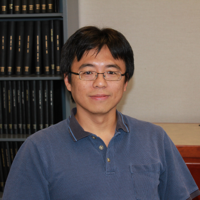
Han-Wei Shen
The Ohio State University
August 19, 2013
Han-Wei Shen is a full professor with the Department of Computer Science and Engineering at The Ohio State University, USA. He received his BS degree from Department of Computer Science and Information Engineering at National Taiwan University in 1988, the MS degree in computer science from the State University of New York at Stony Brook in 1992, and the Ph.D. degree in computer science from the University of Utah in 1998. From 1996 to 1999, he was a research scientist at NASA Ames Research Center in Mountain View California. His primary research interests are scientific visualization and computer graphics. Professor Shen is a winner of National Science Foundation’s CAREER award and US Department of Energy’s Early Career Principal Investigator Award. He also won the Outstanding Teaching award twice in the Department of Computer Science and Engineering at the Ohio State University.haracterize failures.

Alex Szalay
Johns Hopkins University
August 8 & 9, 2013
Alexander Szalay is the Alumni Centennial Professor of Astronomy at the Johns Hopkins University, and Professor in the Department of Computer Science. He is the Director of the Institute for Data Intensive Science. he is a cosmologist, working on the statistical measures of te spatial distribution of galaxies and galaxy formation. He is a Corresponding Member of the Hungarian Academy of Sciences, and a Fellow of the American Academy of Arts and Sciences. In 2004 he received an Alexander Von Humboldt Award in Physical Science, in 2007 the Microsoft Jim Gray Award. In 2008 he became Doctor Honoris Causa of the Eotvos University, Budapest.
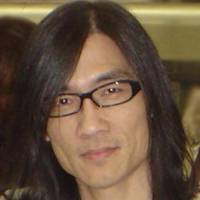
Kwan-Liu Ma
The University of California - Davis
August 7 & 8, 2013
Kwan-Liu Ma is a professor of computer science and the chair of the Graduate Group in Computer Science (GGCS) at the University of California, Davis. He leads the VIDi research group and directs the DOE SciDAC Institute for Ultrascale Visualization. Professor Ma received his Ph.D. degree in computer science from the University of Utah in 1993. He was a recipient of the PECASE award in 2000. His research interests include visualization, high-performance computing, and user interface design. Professor Ma is an IEEE Fellow, and a founder of the IEEE Pacific Visualization Symposium and IEEE Symposium on Large Data Analysis and Visualization.
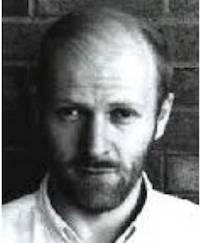
Edward Givelberg
Johns Hopkins University
August 7, 2013
Edward Givelberg is a research scientist with the Department of Physics and Astronomy at Johns Hopkins University. He received his Ph.D. degree in mathematics from New York University in 1997. He was a research scientist in mathematics at New York University, Courant Institute in 2004 and in computer science at UC Berkeley in 2002. Givelberg also was an assistant professor at the University of Michigan in 1999. His specialties include large-scale simulations of complex physical systems, numerical solutions of partial differential equations, fluid-structure interactions, and cochlear modeling and hearing research.
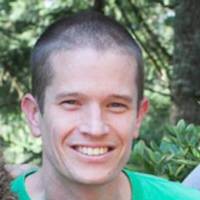
Jake Vanderplas
The University of Washington
August 1 & 2, 2013
Jake Vanderplas is an NSF Postdoctoral fellow at the University of Washington, working jointly between the Astronomy department’s Survey Science Group, and the Computer Science department’s Database Research Group. He received his Ph.D. in Astronomy from the University of Washington in 2012 for work in the areas of Cosmology, Weak Gravitational Lensing, and the application of automated machine learning and data mining approaches to large astronomical datasets in various contexts. This work led him to co-author an upcoming book, ‘Statistics, Data Mining, and Machine Learning in Astronomy’ to be published in late 2013. Along with his research interests, Jake is an active user, developer, proponent, and teacher of the Python language for open, reproducible science, and will argue vehemently with anyone who says R is better.

Cristian C. Lalescu
John Hopkins University
July 24, 2013
Cristian C. Lalescu received his bachelor’s degree (in physics) from the University of Craiova (Romania) in 2006. He then spent a year at Universite Libre de Bruxelles (Belgium) through a student exchange program. In 2007 he started his Ph.D. with one advisor (Daniele Carati) from Universite Libre de Bruxelles and one advisor from the University of Craiova (Bucur Dan Grecu), in a joint program between the two universities. The public defense of his thesis was on the 1st of July 2011, in Craiova, the title being “Test Particle Transport in Turbulent Magnetohydrodynamic Structures”. Since then Lalescu has been at Johns Hopkins University as a postdoc, where he is working with Gregory Eyink (and others), as part of the Turbulence Database Group. He is currently working on simulations of incompressible Navier-Stokes turbulence, refinement of Navier-Stokes solutions, and Lagrangian statistics of incompressible magnetohydrodynamic turbulence.

Marcus D. Hanwell
Kitware
July 16 to 18, 2013
Dr. Marcus D. Hanwell is a Technical Leader at Kitware, where he leads the Open Chemistry project and play a critical role in developing new workflows in Git, performing Gerrit code review, and contributing to next generation build systems in the VTK, ITK, and Titan projects. Dr. Hanwell is the Principal Investigator on the Open Chemistry project, which focuses on developing open-source tools to for chemistry, bioinformatics, and materials science research. He was inspired to pursue the development of computational chemistry tools while working on his experimental/computational Physics Ph.D. and postdoctoral studies, when he realized how outdated and cumbersome current tools are for handing the scale of data required by chemists. In his spare time, Dr. Hanwell is an active member of the KDE open-source communities, and of the KDE e.V. He is one of the core developers of Avogadro, an open-source, 3D, cross-platform molecular visualization and editing application/library; this work was featured by Trolltech as an instance of “Qt in Use.” Dr. Hanwell has also won a Blue Obelisk award for his work in Open Chemistry, and continues to develop and promote open approaches in chemistry and related scientific fields.

Valerio Pascucci
The University of Utah
July 9 & 10, 2013
Valerio Pascucci is the funding Director, Center for Extreme Data Management Analysis and Visualization (CEDMAV), recently established as a permanent organization at the University of Utah in collaboration with the Pacific Northwest National Laboratory. Valerio is also an Associate Director, Scientific Computing and Imaging Institute, a Professor, School of Computing, University of Utah, and a Laboratory Fellow, of PNNL. Before joining the University of Utah, Valerio was the Data Analysis Group Leader of the Center for Applied Scientific Computing at Lawrence Livermore National Laboratory, and Adjunct Professor of Computer Science at the University of California Davis. Valerio’s research interests include Big Data management and analytics, progressive multi-resolution techniques in scientific visualization, discrete topology, geometric compression, computer graphics, computational geometry, geometric programming, and solid modeling. Valerio is the coauthor of more than one hundred refereed journal and conference papers and has been an Associate Editor of the IEEE Transactions on Visualization and Computer Graphics.

Peer-Timo Bremer
The University of Utah and Lawrence Livermore National Laboratory
July 9 & 10, 2013
Peer-Timo Bremer is project leader at the Center for Applied Scientific Computing at the Lawrence Livermore National Laboratory and the Associate Director for Research at the Center for Extreme Data Management Analysis and Visualization (CEDMAV) at the University of Utah. His interests include large scale data analysis, visualization, topological techniques, data management, and high dimensional analysis. Peer-Timo is the main software architect for the TALASS (Topological Analysis for Large Scale Science) and ND2AV (N-Dimensional Data Analysis and Visualization) toolkits and the author of numerous conference and journal papers including several best paper awards.

Randal Burns
Johns Hopkins University
June 26 & 27, 2013
Randal Burns is an Associate Professor in the Department of Computer Science and the Institute for Data-Intensive Engineering and Science at the Johns Hopkins University. He is a co-founder, chief architect, and the lead developer of the Open Connectome Project. His research for the last decade has centered on high-performance computing for scientific applications, specifically spatial data organization, batch query processing, and parallel data architectures. He has only recently discovered that neuroscience has the coolest data; he is a first time NIH Principal Investigator as of 2012. He is also a member of the Defense Science Study Group (DSSG) Class of 2012-2013.
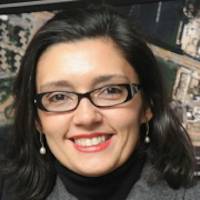
Juliana Freire
The New York University
June 11, 2013
Juliana Freire is a Professor at the Department of Computer Science and Engineering at the Polytechnic Institute of New York University. She also holds an appointment in the Courant Institute for Mathematical Science. Before, she was an Associate Professor at the School of Computing, University of Utah; an Assistant Professor at OGI/OHSU; and a member of technical staff at the Database Systems Research Department at Bell Laboratories (Lucent Technologies). Her recent research has focused on Web-scale data integration, big-data analysis and visualization, and provenance management. Professor Freire is an active member of the database and Web research communities. She has co-authored over 130 technical papers, holds 8 U.S. patents, has chaired or co-chaired several workshops and conferences, and has participated as a program committee member in over 60 events. She is a recipient of an NSF CAREER and an IBM Faculty award. Her research has been funded by grants from the National Science Foundation, Department of Energy, National Institutes of Health, Sloan Foundation, Amazon, Microsoft Research, Yahoo!, IBM, and the University of Utah.

Chris North
Virginia Tech
May 29, 2013
Dr. Chris North is an Associate Professor of Computer Science at Virginia Polytechnic Institute and State University. There, he directs the GigaPixel Display Laboratory and is a member of the Center for Human-Computer Interaction. He received his Ph.D. at the University of Maryland, College Park in 2000. His research is in the areas of human-computer interaction, information visualization, visual analytics, large high-resolution displays, and visualization evaluation methods. He is currently the papers co-chair for IEEE VAST 2013.